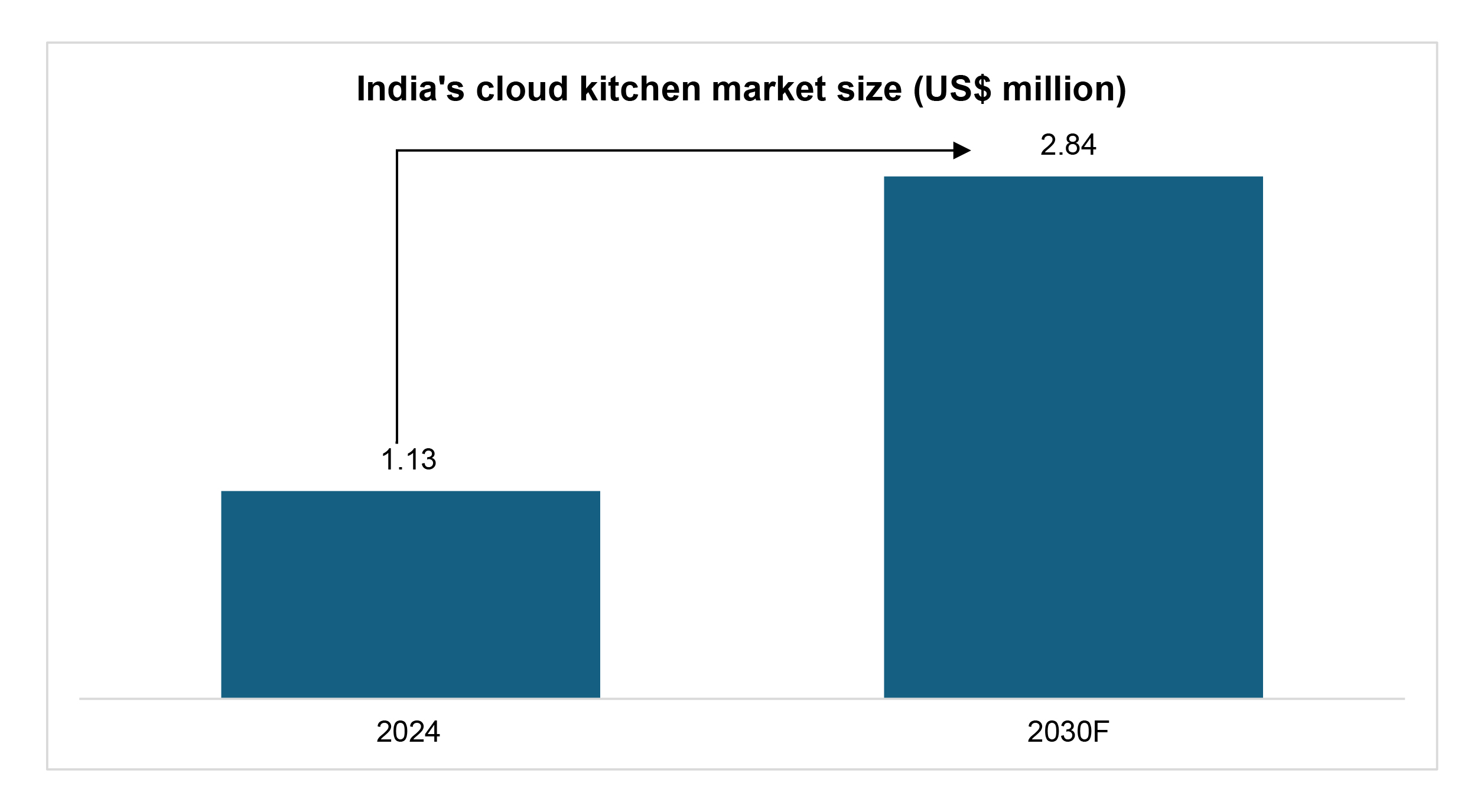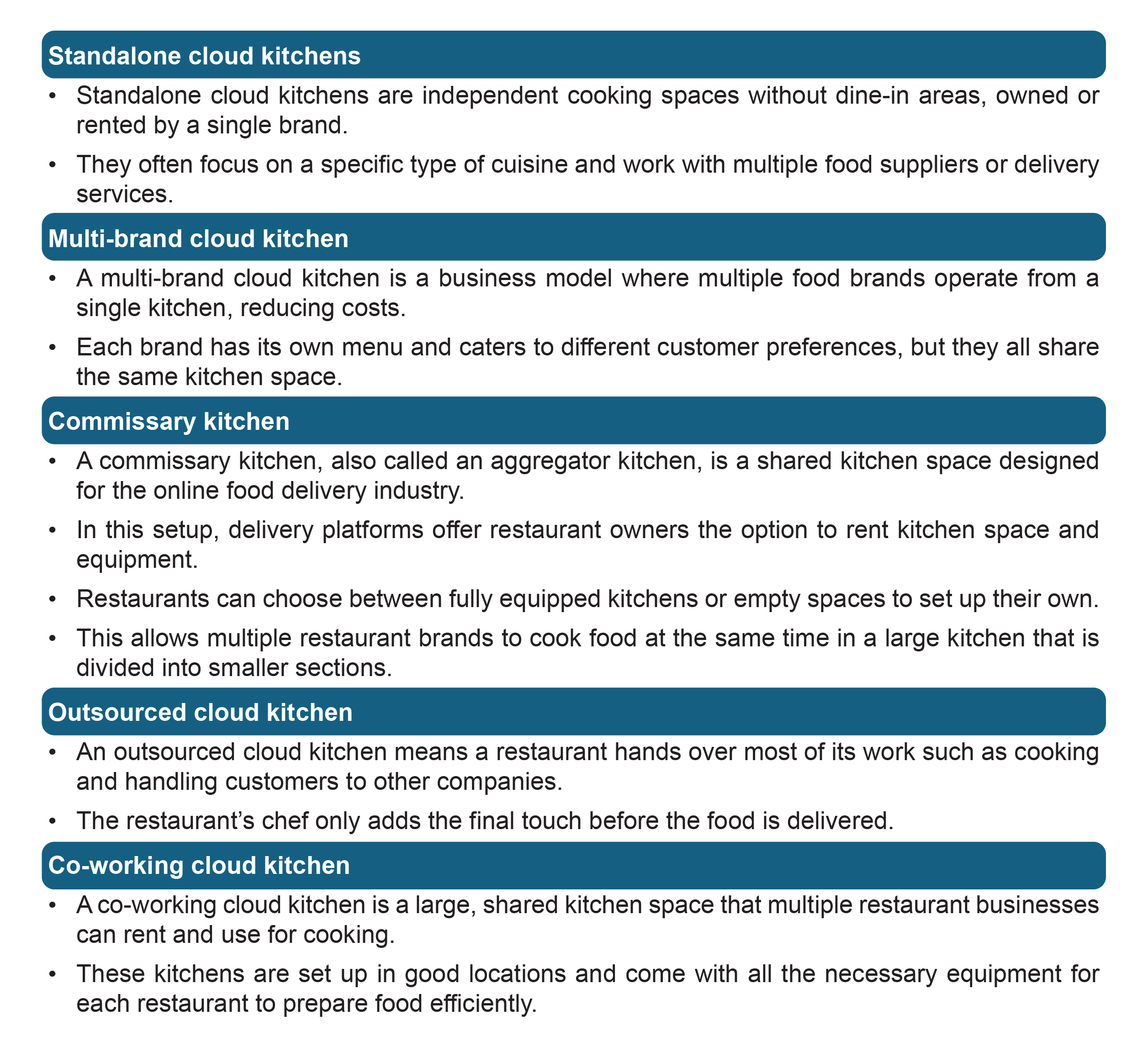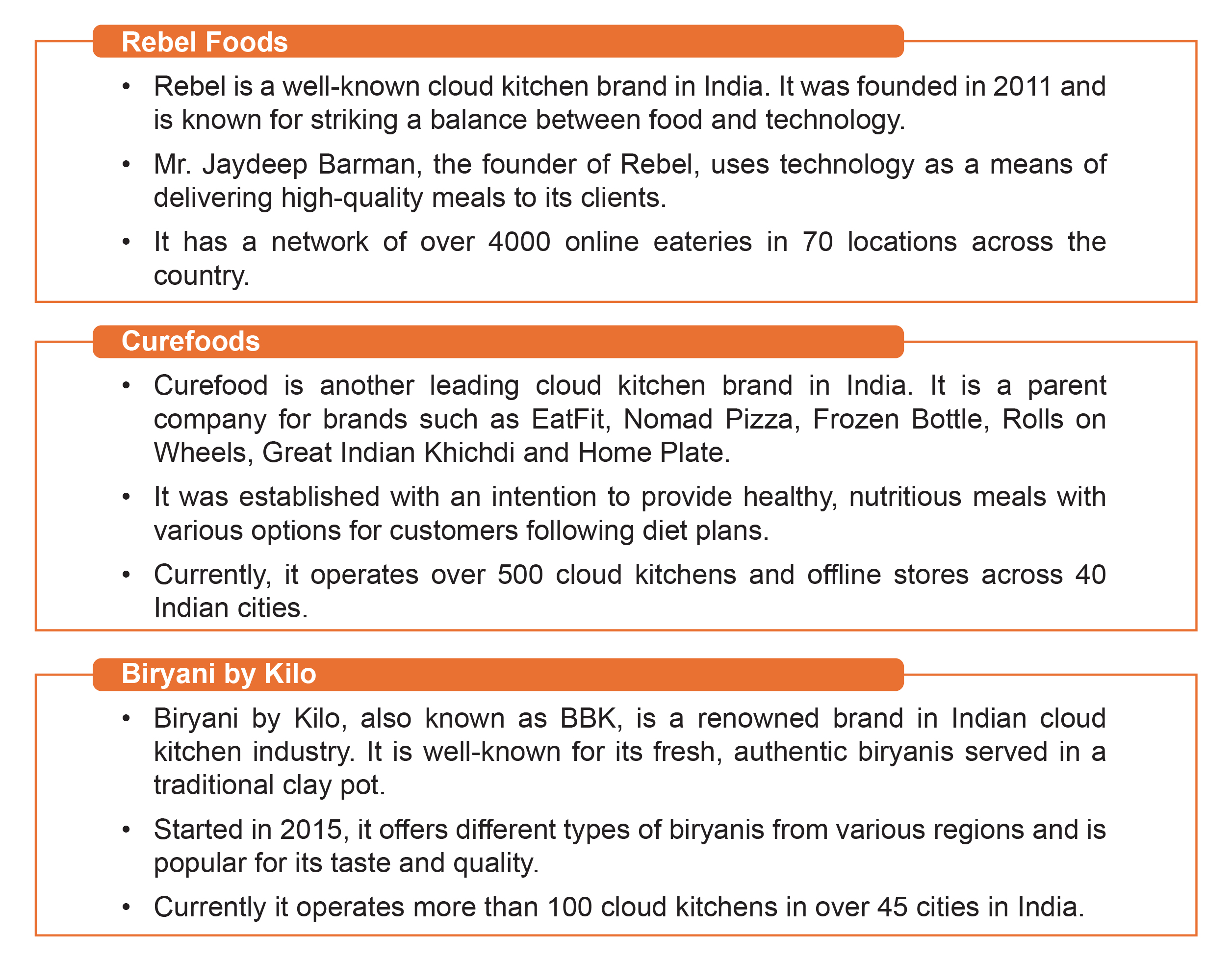SEARCH
RECENT POSTS
Categories
- Agriculture (30)
- Automobiles (18)
- Banking and Financial services (33)
- Consumer Markets (49)
- Defence (6)
- Ecommerce (21)
- Economy (67)
- Education (13)
- Engineering (6)
- Exports (21)
- Healthcare (24)
- India Inc. (8)
- Infrastructure (29)
- Manufacturing (28)
- Media and Entertainment (15)
- Micro, Small & Medium Enterprises (MSMEs) (15)
- Miscellaneous (30)
- Perspectives from India (33)
- Pharmaceuticals (4)
- Railways (4)
- Real Estate (16)
- Renewable Energy (17)
- Research and Development (9)
- Retail (1)
- Services (6)
- Startups (15)
- Technology (53)
- Textiles (6)
- Tourism (13)
- Trade (5)
The Rise of Cloud Kitchens in India: A Game-Changer in the Food Industry

- Aug 06, 2025, 11:35
- Consumer Markets
- IBEF
Cloud kitchens, also known as virtual or ghost kitchens, have completely changed the operations of food businesses in India. These kitchens operate without dine-in facilities by solely focusing on preparing food and delivering it to the customer. This saves their owners the heavy operational cost of paying rent and hiring staff compared to restaurants, making it a very cost-effective business model. By focusing entirely on online food orders, they also allow their owners to reach more customers without the big expenses of running a traditional restaurant. The increasing use of smartphones and a rising middle-class population with a higher disposable income has significantly fuelled the growth of cloud kitchens in India. Furthermore, the Covid-19 lockdown has positively impacted the business leading to speedy expansions in Tier-2 and Tier-3 cities across the country. Cloud kitchens also allow their owners to experiment with new ideas and menus, making them a smart and flexible option for today’s food industry.
Market size and forecast
The cloud kitchen industry gained momentum during the pandemic and has experienced remarkable growth since then. As of July 2024, online services accounted for 12% of the country's food delivery market. By 2030, this share is projected to increase to 20%, indicating a shift towards digital platforms for food orders. India’s cloud kitchen market stood at Rs. 9,747 crore (US$ 1.13 billion) in 2024. It is expected to touch Rs. 24,498 crore (US$ 2.84 billion) by 2030 at a compound annual growth rate (CAGR) of 16.7% during 2024-30.

Source: Research and Market, F - Forecasted
Types of business model for cloud kitchen

How to start a cloud kitchen in India?
A cloud kitchen is one of the trending options available for customers and cheaper for entrepreneurs to step in the food industry. Setting up a cloud kitchen is easier than running a restaurant, as it needs less investment and low maintenance. Following are some guidelines to start a cloud kitchen in India.
- Research and plan: Understanding the market is a necessary step to start the cloud kitchen. Choose a popular cuisine according to the targeted audience, local competition and ongoing trends. This will help sustain the business in a competitive industry.
- Pick a location: Find a cost-effective place that has good delivery coverage and is easily accessible to delivery drivers. This will help reduce the delivery cost and time.
- Register business: A legal checklist for smoothly running a cloud kitchen includes:
- Food Safety and Standard Authority of India (FSSAI) licence costing around Rs. 10,000 (US$ 115) for a year.
- GST registration for the cloud kitchen business as it involves supply of food and beverages.
- Municipal health trade licenses issued by local municipal authorities, permitting you to run a business in a specific area.
- Cloud kitchens registered under the applicable state’s Shop Establishment Act even though they have no physical location.
- A fire and safety licence to serve as proof that the kitchen follows safety regulations. Trademark registration will help to prevent brand infringement.
- Set up kitchen: Equip the space with proper cooking tools, appliances and safety measures to ensure cleanliness and safety. Having essential items such as grinders, refrigerators and ovens will help to cut down the cooking time.
- Create a brand: A catchy and easy-to-remember brand name and logo to help with marketing, as customers are more likely to remember it and repeat orders in future. It also helps to build an online presence through websites or social media.
- Partner with delivery apps: Collaborating with famous, trusted online food delivery platforms with a large user base, will help to reach out more customers and ultimately ensuring the smooth operation of business.
- Focus on hygiene and packaging: Utilising high-quality, eco-friendly packages will help to keep the food fresh and at the right temperature. Packages should be sturdy, spill-free and should maintain the temperature of food. Reuseable containers with appropriate instructions can encourage customers to reorder.
- Use technology: A Point of Sale (POS) system is a vital tool that enables managing payments, order and operations, especially while dealing with more than one delivery platform. It helps to organise the order management, kitchen operations and inventory. This enables efficiency and improves customer experience. Additionally, a POS system works on any browser and device.
Benefits of cloud kitchens for small businesses
Setting up a cloud kitchen is comparatively easier for small businesses due to significant advantages of lower operational costs, increased flexibility and expanded reach through online delivery platforms. Following are some key benefits:
- Lower operational cost: A cloud kitchen significantly requires lower initial cost. As it does not provide a dine-in facility, it has lower operational costs compared to a traditional restaurant that has several cost dimensions encompassing infrastructure, administrative expenses, logistics and similar aspects.
- Increased flexibility: The cloud kitchen business model allows its owners to try out a variety of concepts without investing heavily. It is possible to run multiple brands from a single kitchen by utilising the same infrastructure and resources. Adding a new food delivery brand and removing it from the internet does not bear any additional cost or affect other successful branches of the same cloud kitchen.
- Market reach: By partnering with online food delivery apps, cloud kitchens can reach more customers, get noticed and attract new buyers. This also enables them to serve different areas from one kitchen without bearing any additional cost for extra locations.
- Focus on quality and speed: With no dine-in facilities, cloud kitchens can solely concentrate on optimising food preparation processes to ensure that high-quality meals are delivered swiftly.
Leading cloud kitchen startups in India
Cloud kitchen is an emerging segment in the food industry. However, India already has many successful cloud kitchen startups that have revolutionised food delivery. These startups focus mainly on high-quality food, efficient delivery and innovative ideas to meet modern customer demands.

The increasing population, changing eating preferences, longer waiting time at restaurants and longer travel times are making home-delivered food a popular, affordable and convenient choice. The rapid shift towards digitalisation and the increasing popularity of online food delivery services have accelerated the expansion of cloud kitchens. Cloud kitchens have redefined the way we experience food delivery, offering convenience, variety and speed. It is a highly successful low-investment, high-return investing strategy. Moreover, the pandemic has provided this industry the much-needed boost as many housewives have started their own cloud kitchen businesses. Despite specific challenges such as late delivery, dependence on delivery platforms, technology and many more, cloud kitchens are the ultimate need of time with a promising future.
















